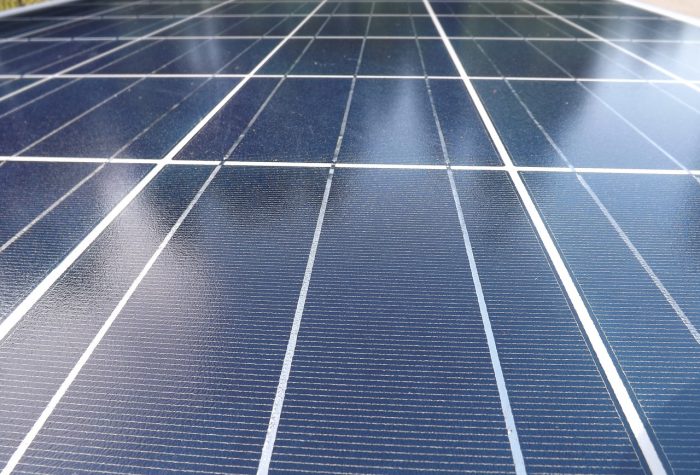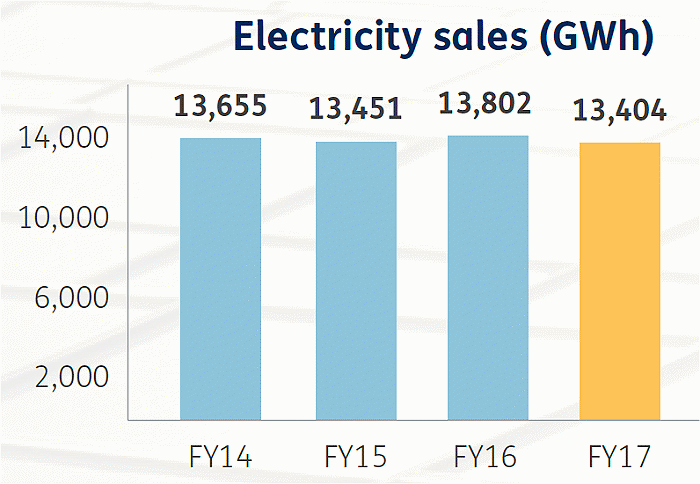
Image: seagul
While Synergy’s recently released 2017 Annual Report indicates solar power may be eating some of its lunch, the company is also making progress in including more PV in its diet.
Western Australian-government owned Synergy provides 52% of the electricity sold to households and business customers in the state’s South West Interconnected System (SWIS). The SWIS covers from Kalbarri in the north to Kalgoorlie in the east and Albany in the south.
Synergy owns and operates electricity generators including thermal power stations, wind and solar farms and hybrid systems. Its PV facility at Greenough River was Australia’s first utility-scale solar farm.
Synergy CEO Jason Waters said 2016/17 was a particularly tough year for the company.
“Never before in my 27 years in the industry have the forces of policy and regulation, consumer interests, broader economic conditions and new technologies conspired to make a once reliable and stable industry so difficult,” stated Mr. Waters.
However, he also commented he was pleased with progress Synergy has made as a business.
Synergy says electricity sales decreased 2.9 per cent in FY17 from FY16; primarily as a result of the rapid uptake of solar power systems and increased competition in the retail portfolio.

Electricity sales – Western Australia
Home Battery Interest Building
While the impact of the home solar revolution is being felt in electricity sales, the company is also attempting to turn lemons into lemonade through offering a range of solar products that it calls SolarReturn. Synergy says more than 500 customers
purchased SolarReturn packages during the year.
Synergy’s solar related products include Hanwha Q-Cells and LG solar panels, Fronius inverters and Fronius battery systems.
Panel popularity is being boosted by interest in energy storage.
“The content about solar and battery options on our website regularly ranks amongst the most viewed pages,” states the report. “It’s clear consumers are looking to invest in self managed energy solutions and there is continuously increasing demand for more information and education on battery technology in particular.”
More Large-Scale Renewables In The Wind (And Sun)
Synergy says it has been assessing the potential for expanding Greenough River solar farm and development of Warradarge wind farm. The proposed wind facility will have up 100 wind turbines and a capacity of up to 250 megawatts. Should it proceed, the wind farm will be built 15 km north-east of Warradarge (~250 kilometres north-west of Perth).
In May this year, Synergy announced it will retire four generation assets at the State Government’s direction by the end of September next year. Three of the assets are gas turbine plants and the fourth is ill-famed coal-fired Muja AB power station.
Last week we mentioned Muja AB as an example of what can happen when attempting to extend the life of clapped-out coal-fired generators; a hot topic currently due to the wrangling of over the future of. Liddell Power Station in New South Wales.
Synergy’s 2017 Annual Report can be accessed here (PDF).

 RSS - Posts
RSS - Posts



An interesting observation, is that, at 1347WST (UTC+0800), at renewecnomy.comau/nem-watch/ , in WA, 367 out of 2144 MW is shown as being generated by APVI small solar, and, for NSW, 392 out of 7015MW, is shown as being generated by APVI small solar.whilst the wind generated electrcicity for NSW is 518MW, compared to 4MW for WA, the coal fired component for NSW is 5348 0f7015MW, compared with 795 out of 2143 for WA. (During the time that it took to write this post, the numbers displayed, were updated, but, the proportions are still sufficiently indicative of the point.
WA appears to have a significantly higher (per capita) uptake of domestic rooftop photovoltaic systems, and, cleaner (by percentage of total) electricity generation, than NSW.
Now, in terms of the article above, and, the need for updating of the electricity grid regulations, in WA (and, for the whole of Australia, we need for the regulations to be updated, to allow households to have, for single phase electricity, permission to have and use, the up to 5 kW of electricity generation inverter capacity, ,currently allowed, but, with storage batteries being not regarded as electricity generation, so that households would be allowed to have up to 5kW of generation, plus however much storage is wanted by the household. With hybrid inverters, this should be able to be accomplished, safely. After all, we are allowed as many (little) UPS’s as we want – why can’t they all be combined into a large UPS, like a Tesla Powerwall 2 storage battery, or, a number of such batteries?
Could you please find, and, publish, Synergy’s response to my suggestion above; that “we need for the regulations to be updated, to allow households to have, for single phase electricity, permission to have and use, the up to 5 kW of electricity generation inverter capacity, currently allowed, but, with storage batteries being not regarded as electricity generation, so that households would be allowed to have up to 5kW of generation, plus however much storage is wanted by the household.”?
Thank you in anticipation.
An update – I have contacted Synergy SolarReturn, and have been advised that
1. Having 5kW of domestic rooftop photovoltaic generating capacity on a single phase electricity supply (with Synergy) does not preclude having storage batteries precluded, and
2. any additions to household domestic rooftop photovoltaic generating systems, including adding extra panels, replacing inverters (to incorporate hybrid inverters to allow connection with storage batteries, etc), and adding storage batteries, will not be done with systems that are more than one or two years old, without replacing the existing systems.
For example, with our household, with two inverters incorporated within two domestic rooftop photovoltaic generating systems, with a nominal output of 5kW, to add a storage battery, and/or to add extra panels, even a single panel, would require replacement of all of the domestic rooftop photovoltaic generating equipment, even the racking, as our systems are about 4 years old, and, any additions/modifications, need to be done within a year of the initial installation.
So, people who have systems that are more than about a year old, like us, need to wait until the systems fail and need replacing, before any additions/modifications are made.
“Such is life.”
For clarification of my last post above, here is the corrected version.
I have contacted Synergy SolarReturn, and have been advised that
1. Having 5kW of domestic rooftop photovoltaic generating capacity on a single phase electricity supply (with Synergy) does not preclude having storage batteries added to, or included in, a system, as storage batteries are “not regarded as renewable energy generation”, and
2. any additions to household domestic rooftop photovoltaic generating systems, including adding extra panels, replacing inverters (to incorporate hybrid inverters to allow connection with storage batteries, etc), and adding storage batteries, according to the regulations, requires that whatever company does the additions or modifications to the existing system, assumes, by virtue of performing the additions/alterations, subsequent responsibility for the whole of the system(s) upon which they work and, therefore,
3. any additions to household domestic rooftop photovoltaic generating systems, including adding extra panels, replacing inverters (to incorporate hybrid inverters to allow connection with storage batteries, etc), and adding storage batteries, will not be done with systems that are more than one or two years old, without replacing the existing systems, including the mounting framework for the panels.
For example, with our household, with two inverters incorporated within two domestic rooftop photovoltaic generating systems, with a nominal output of 5kW, to add a storage battery, and/or to add extra panels, even a single panel, would require replacement of all of the domestic rooftop photovoltaic generating equipment, even the racking, as our systems are about 4 years old, and, any additions/modifications, need to be done within a year of the initial installation.
So, people who have systems that are more than about a year old, like us, need to wait until the systems fail and need replacing, before any additions/modifications are made.
“Such is life.”
It seems a bit odd that if you chose to add Battery storeage to your system that is more than a two years old, that you would be required to replace the whole system. I cannot imagine too many people installing batteries if this were true. It would be safe to assume that many people are waiting for the right price to retrofit battery storage to their systems, I would be surprised if they would like the idea of scrapping their current system just so they can add batteries.